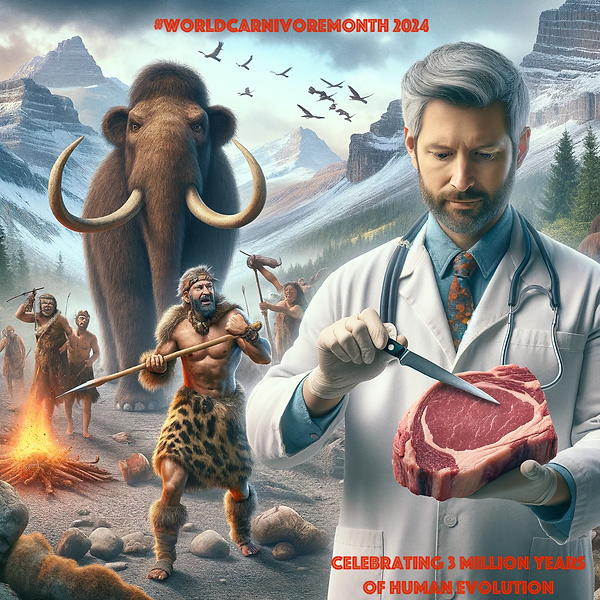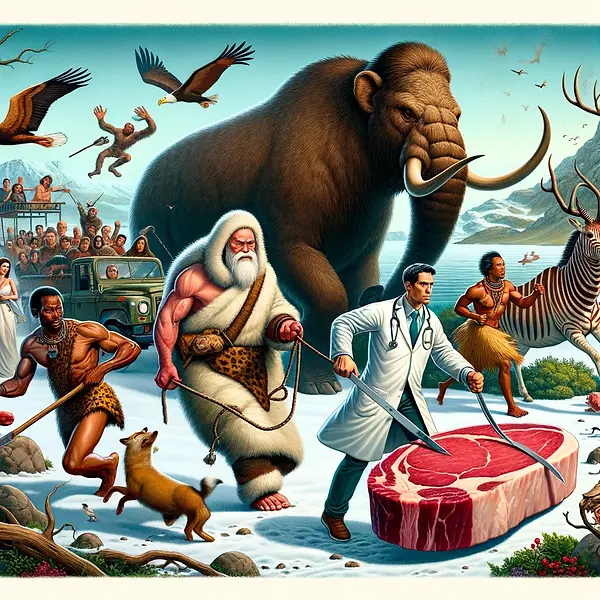


Title:
Intestines - general theory
Abstract:
Summary of evolutionary changes in the human gut
Details
https://www.frontiersin.org/articles/10.3389/fevo.2020.00025/full?utm_source=fweb&utm_medium=nblog&utm_campaign=ba-sci-fevo-early-hominin-microbiome
The Intestines
At some point in the last six million years, in addition to the potential changes in stomach acidity, the guts of our ancestors changed in other ways. The large intestine became shorter relative to the small intestine, while total intestine length also declined relative to body size. That this shift and shortening happened is suggested based on comparisons between the guts of chimpanzees, bonobos, and humans as well as the relatively smaller rib cage (and hence space available for the intestines) in the genus Homo compared to earlier hominin species (Aiello and Wheeler, 1995). However, it is worth noting that even within humans that the length of the large intestine varies even among individuals with similar genetic backgrounds. In one study of one hundred individuals, the shortest small intestine observed in any individual was half the length of the longest small intestine. Similarly, the ratio of small intestine to large intestine varied from 2.6 to 4.5. Given that gut morphology differs within populations of modern humans, it is possible (indeed likely) that variation among modern human populations is even greater (Underhill, 1955). To date no studies have considered such variation. The mean ratio of the small to large intestine length for chimpanzees is 1.0 (such that the chimpanzee large intestine is equal in length, on average) to the small intestine (Chivers and Hladik, 1984). But undoubtedly this value varies among chimpanzees as well, such that it is not inconceivable that some human populations and some chimpanzee populations actually have far more similar gut morphologies than tends to be assumed.
The shortening in the relative size of the human large intestine, whatever its consistency and magnitude, raises two questions: why the shortening occurred and what its consequences might have been for digestive physiology and the gut microbiome. In general there seems to be an emerging consensus that the use of tools, especially stick and stone kitchen tools of various sorts, to obtain and process foods made our ancestors less reliant on the fermentation that occurs in the large intestine. Cooking is likely one of the tools that our ancestors had at their disposal. Recent work has shown that cooking plant food reshapes the gut microbial environment (Carmody et al., 2019), suggesting that the use of fire, despite mixed evidence for its impact on starch digestibility (Schnorr et al., 2016), may have made nutrients in some types of food more available and also eased the chewing necessary to break down food (Wrangham, 2009). Fire may have also made it possible to smoke hives and therefore easier to harvest large quantities of honey with its easy to digest calories (which do not necessarily require gut microbes; Marlowe et al., 2014). In addition, fishing techniques and tools might have made fish and shellfish protein available which, even raw, is very easy to digest. Pounding tools, such as those employed by chimpanzees, would have made roots and tubers also easier to digest (Crittenden, 2016). Similar tools are used by many small-scale societies around the world, including contemporary subsistence foragers (Benito-Calvo et al., 2018) as well as by chimpanzees (and hence likely our LCA; Figure 2). All of this is to say that as our ancestors invented more kitchen implements they would have been able to pre-digest and pre-process some of their foods, allowing them to rely less on microbes in their guts to break down recalcitrant components of their diets, such as cellulose. They could get by with smaller guts and invest their bodily energy elsewhere, for example in big brains (an idea called the expensive tissue hypothesis; Aiello and Wheeler, 1995).
The shorter average large intestine length of species of Homo compared to those of their ancestors would have had at least two potential consequences for microbiomes. The shorter larger intestine would have sustained a smaller biomass of microbes relative to their body mass (simply because of the reduction in volume). In addition, the retention time of foods in the gut may have been reduced (Ragir et al., 2000). Some features of microbiomes, however, seem likely to have been similar between hominins and our LCA with chimpanzees despite changes in gross intestinal morphology. For example, the taxonomic classes of bacteria found in the guts of both chimpanzees and humans (from urban and rural settings) tend to overlap. What is more, the same families and genera of bacteria tend to occur in similar proportions (Moeller et al., 2012). This overlap is hypothesized to pre-date the human-chimpanzee split (and hence to be characteristic of our LCA). Furthermore, humans in small-scale, non-industrialized populations host a handful of microbial taxa that appear to be genetically equivalent to those in great apes at the level of operational taxanomic units (OTUs) or strains (Amato et al., 2019b). The same humans also share a range of bacterial metabolic pathways with other extant apes, including those involved in vitamin and amino acid synthesis. These results suggest that despite the reduction in length of the human intestines, enough physiological similarities remain between humans and apes such that the composition and function of their microbiomes is similar.
Nevertheless, despite these similarities, it is important to point out that the gut microbiomes of modern humans diverge in important ways from those of extant apes. These differences do not, however, appear to relate to gross morphological features of the gut but instead to diet. The gut microbiomes of humans, while similar to those of modern chimpanzees, appear to be even more similar to those of cercopithecine monkeys, such as baboons (genus Papio; Amato et al., 2019b; Figure 3). Differences in gut microbiome composition are greater between humans and apes (PERMANOVA F1,55 = 14.4, r2 = 0.21, p < 0.01) than between humans and cercopithecines (PERMANOVA F1,57 = 10.0, r2 = 0.15, p < 0.01). Differences in gut microbiome functional potential are similar between humans and apes (PERMANOVA F1,35 = 5.4, r2 = 0.16, p < 0.01) and humans and cercopithecines (PERMANOVA F1,35 = 7.4, r2 = 0.18, p < 0.01). While humans are genetically far more similar to chimpanzees than to baboons, baboons are more similar in diet (and habitat use) to ancestral Homo species than are chimpanzees. Baboons eat diets that are highly omnivorous and relatively high in starch content. Since the gut microbiome plays an important role in processing host dietary compounds, particularly resistant carbohydrates (and in some cases, specifically fibrous plant foods, see Schnorr et al., 2014) it is likely that the same microbial lineages and metabolic pathways nutritionally benefited both our hominin ancestors and extant cercopithecines. Given that the human shift toward habitats and diets like those of modern baboons are often linked to tool use, cooking, and ultimately, reductions in human intestinal length, it seems reasonable to suggest that this suite of changes altered the human gut microbiome. The result appears to be a “characteristic” human microbiome composed of both “ape” and “cercopithecine” traits.
Hypothesis:
I think this section could be written to favor FC much more strongly.
I'm curious - what are the benefits of the microbiome? Create necessary vitamins and nutrients and short chain fatty acids? Reduce inflammation? Process toxic compounds from diet? Prevent intestinal permeability?
I'd like to see the microbiome compared with more omnivores and carnivores - and see if ape microbiomes also change with all-meat-based diets as we would expect they would - but not as much to some beneficial degree as humans.
I'd be especially interested to see if all-meat diets 'ruin' ape guts or create some sort of chronic disease. That would mean humans evolved to handle more meat.




